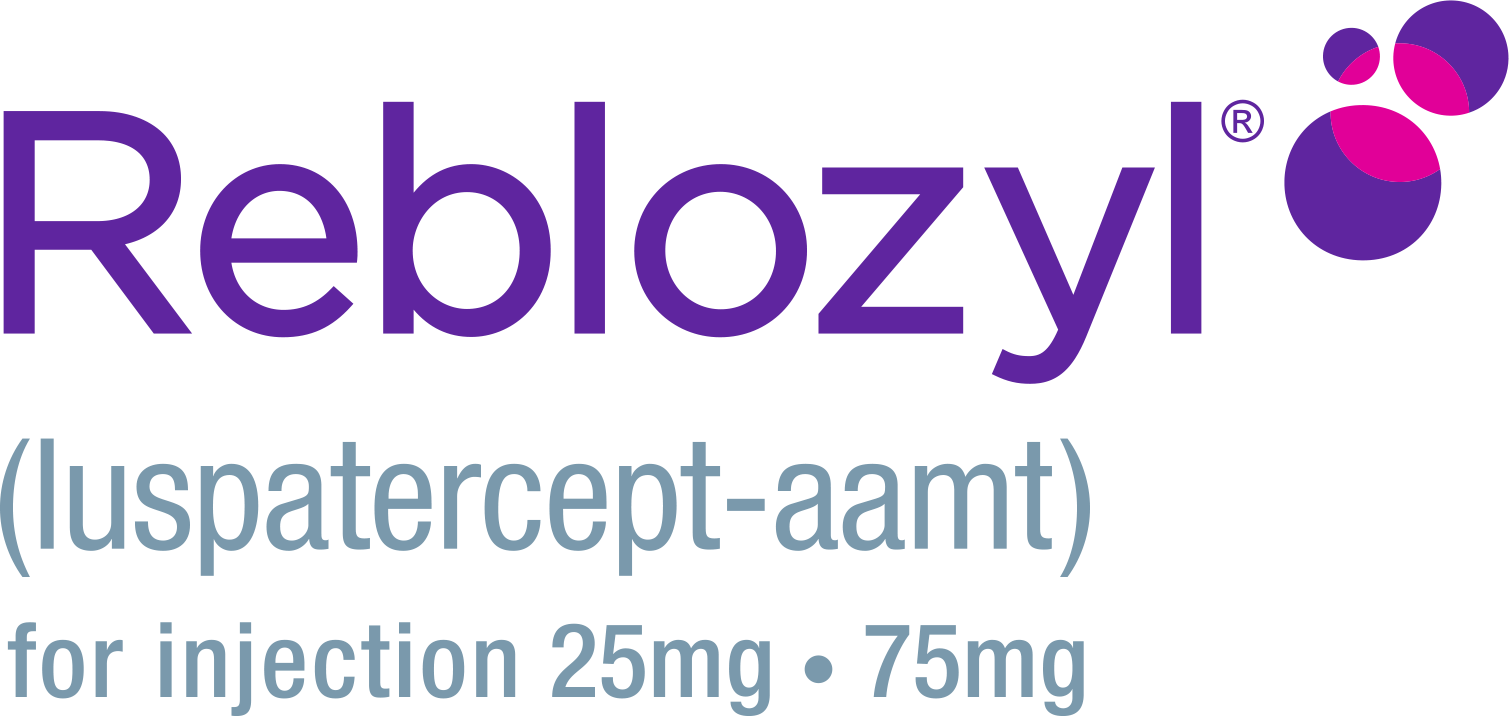Body system/
|
REBLOZYL(n=223) |
Placebo(n=109) |
||
|---|---|---|---|---|
| All Grades n(%) |
Grade 3a n (%) |
All Grades n (%) |
Grade ≥3 n (%) |
|
| Musculoskeletal and connective tissue disorders Bone pain Arthralgia |
44 (20) 43 (19) |
3 (1) 0 (0) |
9 (8) 13 (12) |
0 (0) 0 (0) |
| Infections and infestations Influenza Viral upper respiratory infection |
19 (9) 14 (6) |
0 (0) 1 (0.4) |
6 (6) 2 (2) |
0 (0) 0 (0) |
| Nervous system disorders Headache Dizziness |
58 (26) 25 (11) |
1 (<1) 0 (0) |
26 (24) 5 (5) |
1 (1) 0 (0) |
| General disorders and administration-site conditions Fatigue |
30 (14) | 0 (0) | 14 (13) | 0 (0) |
| Gastrointestinal disorders Abdominal painb Diarrhea Nausea |
31 (14) 27 (12) 20 (9) |
0 (0) 1 (<1) 0 (0) |
13 (12) 11 (10) 6 (6) |
0 (0) 0 (0) 0 (0) |
| Vascular disorders Hypertensionc |
18 (8) | 4 (2) | 3 (3) | 0 (0) |
| Metabolism and nutrition disorders Hyperuricemia |
16 (7) | 6 (3) | 0 (0) | 0 (0) |
| Respiratory, thoracic, and mediastinal disorders Cough |
32 (14) | 0 (0) | 12 (11) | 0 (0) |
PATIENT OUTCOMES: REBLOZYL SAFETY
REBLOZYL offers a demonstrated safety profile for beta thalassemia patients1
The majority of adverse reactions with REBLOZYL were Grade 1 or 2 (mild to moderate)
- Serious adverse reactions occurred in 3.6% of patients on REBLOZYL
- Serious adverse reactions reported in 1% of patients were cerebrovascular accident and deep vein thrombosis
- A fatal adverse reaction occurred in 1 patient treated with REBLOZYL, who died due to an unconfirmed case of acute myeloid leukemia (AML)
Adverse reactions (>5%) in patients with beta-thalassemia receiving REBLOZYL with a difference between arms of 1% in the BELIEVE trial1
aLimited to Grade 3 reactions with the exception of 4 events of Grade 4 hyperuricemia. bGrouped term includes: Abdominal pain and abdominal pain upper. cGrouped term includes: Essential hypertension, hypertension, and hypertensive crisis.
Important considerations while treating patients with REBLOZYL
Liver function abnormalities1
Immunogenicity1
Extramedullary hematopoietic (EMH) masses
Lactation1
REBLOZYL discontinuations and dose modifications due to adverse reactions in BELIEVE1
Additional analyses of adverse events (AEs) by REBLOZYL treatment cycle2:
Newly experienced AEs
Bone pain, arthralgia, and dizziness
ADR=adverse drug reaction; ALP=alkaline phosphatase; ALT=alanine aminotransferase; AST=aspartate aminotransferase; BSC=best supportive care; RBC=red blood cell; ULN=upper limit of normal.
Review how to dose REBLOZYL to optimize response
References: 1. REBLOZYL [US Prescribing Information]. Summit, NJ: Celgene Corporation; 2023. 2. Viprakasit V, Taher AT, Hermine O, et al. Evaluating luspatercept responders in the phase 3, randomized, double-blind, placebo-controlled BELIEVE trial of luspatercept in adult β-thalassemia patients who require regular red blood cell transfusions. Poster presented at: The 61st Annual Meeting of the American Society of Hematology (ASH); December 7-10, 2019. Orlando, FL, USA. 3. Data on file. Celgene Corporation. Summit, New Jersey. 4. Cappellini MD, Viprakasit V, Taher AT, et al. A phase 3 trial of luspatercept in patients with transfusion-dependent β-thalassemia. N Engl J Med. 2020;382(13):1219-1231.


